Category: Plants & Technology
-
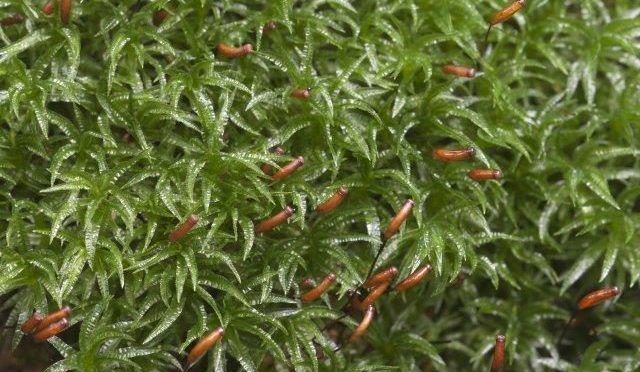
Scientists Tap Simple Mosses To Warn Us Of Dangerous Air Quality
Scientists report that they have found a simple and inexpensive way to detect air pollutants, specifically sulfur dioxide, in real time based on subtle changes in moss leaves. The discovery could rapidly alert authorities to potentially dangerous alterations in air quality using a sustainable, natural plant sensor. (Click on title for full story.)
-
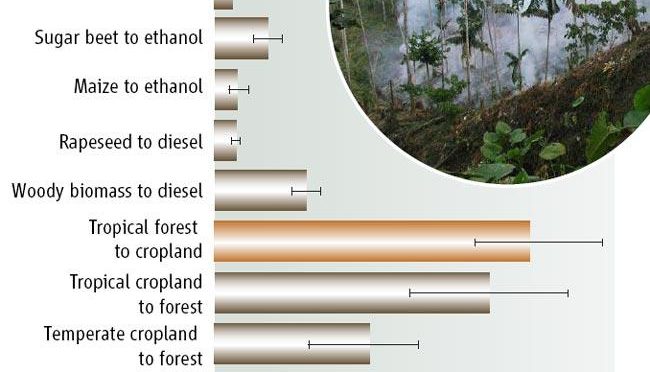
Which Approach Is Better For Limiting Climate Change: Switching To Biofuels Or Planting Forests?
They found that reforestation would sequester between two and nine times as much carbon over 30 years than would be saved by burning biofuels instead of gasoline (see bar chart, right). “You get far more carbon sequestered by planting forests than you avoid emissions by producing biofuels on the same land,” (Click on title for full story.)
-
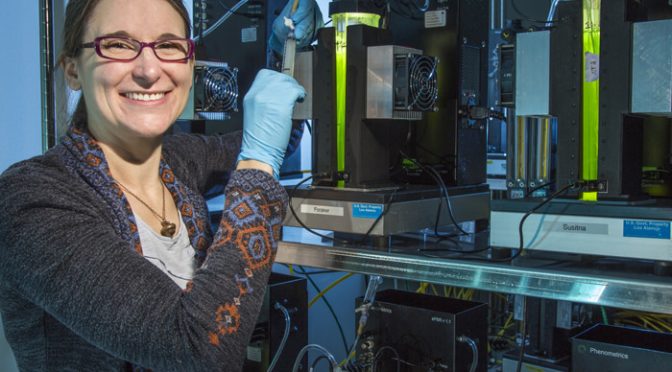
Biofuel Breakthrough: Feeding Agricultural Waste To Algae
“Identifying algae strains that can use plant substrates, such as switchgrass and corn stover (the part of the plant left in a field after harvest) to grow faster and with more lipids suggests that waste plant material can be used to increase the productivity of algae during cultivation for biofuels or bioproducts. Pinpointing the unique enzymes and biochemical pathways algae use to break down complex plant lignocellulose increases our understanding of algal biology, and it opens up new avenues of future designer engineering to improve algal biofuel production strains,” (Click on title for full story.)
-
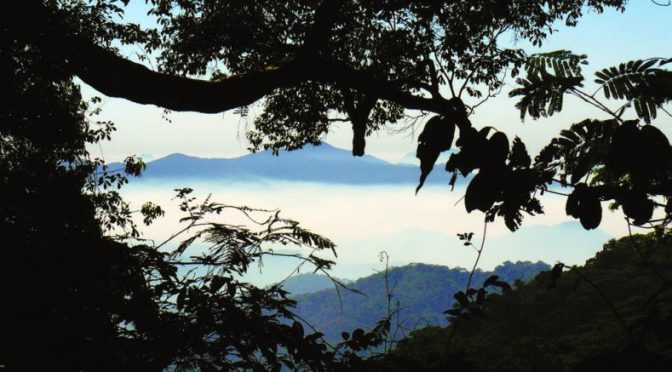
Unknown, Undisturbed Tropical Forest Discovered Using GoogleEarth
Some of the plants they found included a rarely seen orchid, and they discovered a tropical mistletoe, Helixanthera schizocalyx, a hairless parasitic shrub that attaches to tree branches, growing up to 50 cm (1.6 ft) high. All together, the team collected and brought back more than 500 plant specimens, which are being studied in Kew’s Herbarium. (Click on title for full story.)
-
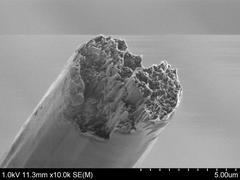
Lab’s Plant-Based Fibers Prove A Strong As Steel
“If you are looking for a bio-based material, there is nothing quite like it. And it is also stronger than steel and any other metal or alloy as well as glass fibres and most other synthetic materials.” The artificial cellulose fibres can be woven into a fabric to create materials for various applications. The researchers estimate that the production costs of the new material can compete with those of strong synthetic fabrics. (Click on title for full story.)
-
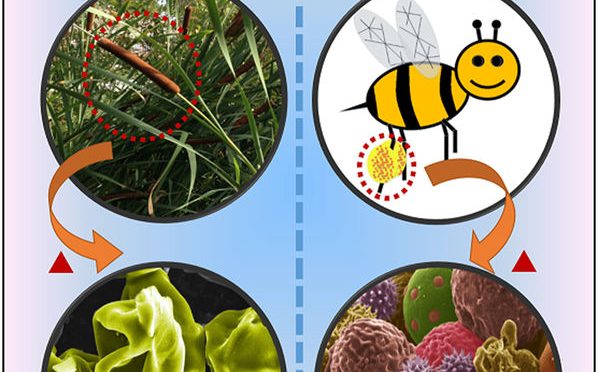
Your Laptop, Even Your Car, May Someday Run On Pollen
This study explored the potential of utilizing pollens as renewable carbon sources for energy storage application and found that high reversible capacities are achievable with careful selection of pollen morphology. (Click on title for full report.)
-
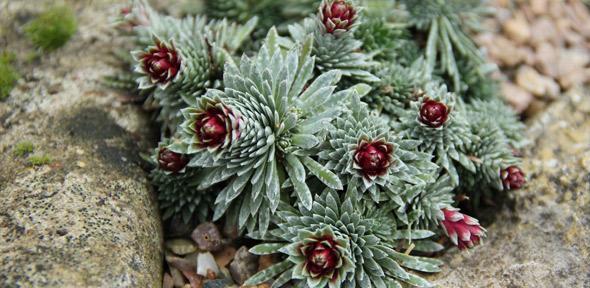
Rare Alpine Plants Found To Produce Even Rarer Mineral The World Wants
Naturally occurring vaterite is rarely found on Earth. Small amounts of vaterite crystals have been found in some sea and freshwater crustaceans, bird eggs, the inner ears of salmon, meteorites and rocks. This is the first time that the rare and unstable mineral has been found in such a large quantity and the first time it has been found to be associated with plants…. “Biochemists are working to synthetically manufacture vaterite as it has potential for use in drug delivery, but it is not easy to make. Vaterite has special properties that make it a potentially superior carrier for medications due to its high loading capacity, high uptake by cells and its solubility properties that enable it to deliver a sustained and targeted release of therapeutic medicines to patients. For instance, vaterite nanoparticles loaded with anti-cancer drugs appear to offload the drug slowly only at sites of cancers and therefore limit the negative side-effects of the drug.” (Click on title for full story.)
-
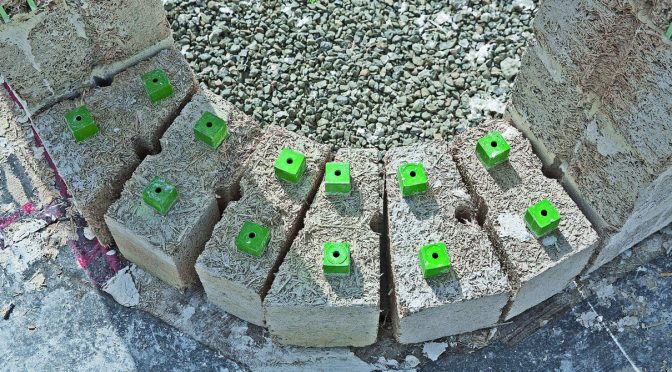
Forget Smoking It, Hemp Could Replace Concrete
The most sustainable building material is not concrete or steel — it is fast-growing hemp. Hemp structures date to Roman times. A hemp mortar bridge was constructed in the sixth century, when France was still Gaul. A wave of builders and botanists are working to renew this market. Mixing hemp’s woody fibers with lime produces a natural, light concrete that retains thermal mass and is highly insulating. No pests, no mold, good acoustics, low humidity, no pesticide. It grows from seed to harvest in about four months. (Click on title for full story.)
-
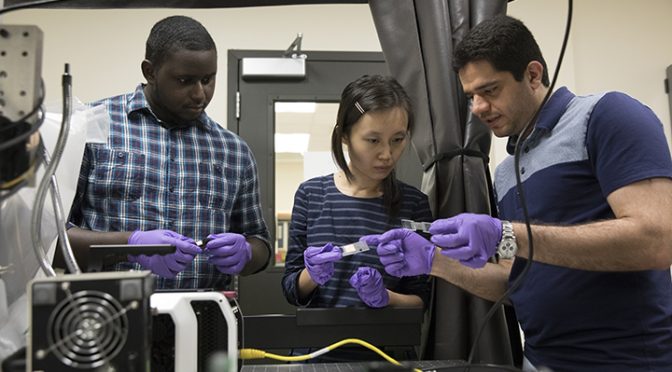
Concrete Infrastructure Could Heal Itself Thanks To Embedded Fungi
The fungal spores, together with nutrients, will be placed into the concrete matrix during the mixing process. When cracking occurs, water and oxygen will find their way in. With enough water and oxygen, the dormant fungal spores will germinate, grow and precipitate calcium carbonate to heal the cracks, When the cracks are completely filled and ultimately no more water or oxygen can enter inside, the fungi will again form spores. As the environmental conditions become favorable in later stages, the spores could be wakened again. (Click on title for full story)
-
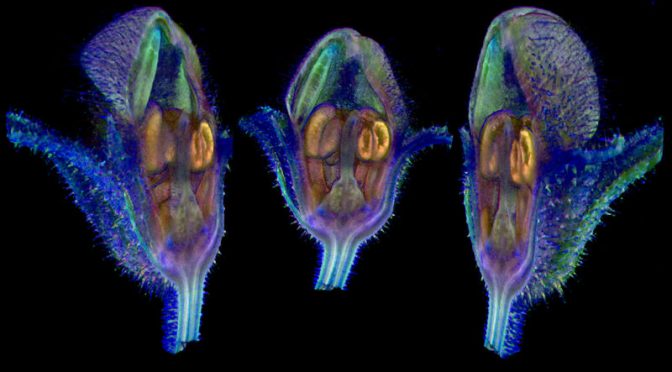
Botany 2.0 – New Technologies Revive Interest In Traditional Botanical Pursuits
Plant biologists hope that, by combining new approaches to botany with data from genomics and imaging labs, they can provide better answers to questions that biologists have asked for more than 100 years: how genes and the environment shape the rich diversity of plants’ physical forms. “People are starting to look beyond their own system into plants as a whole,. Plant morphology was once a science of form for its own sake, she says, but now, it is being pressed into service to understand how plant traits connect to gene activity across disparate species. “It’s coming back — just under different guises.” (Click on title for full story.)
